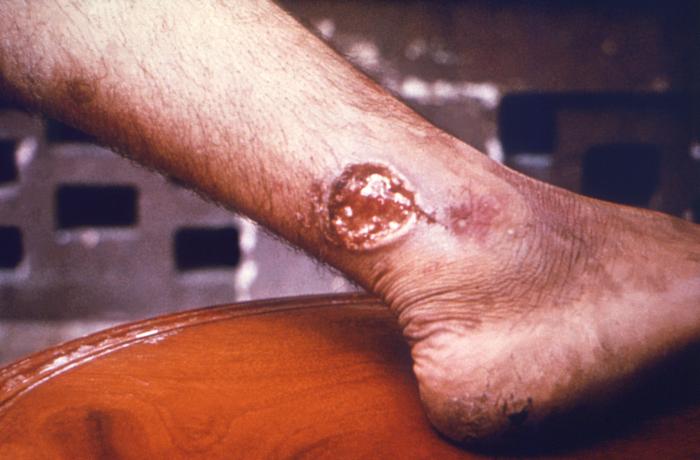NewsDesk @infectiousdiseasenews
Northeastern Syria, which is controlled by the “Syrian Democratic Forces” (SDF), is witnessing a sharp rise in the number of leishmaniasis cases, according to a Asia News report, and the infections were concentrated in the eastern countryside of Deir Ez-Zor and the countryside of Hasaka near the Khabur river.

According to the official responsible for treating leishmaniasis sufferers in the “Kurdish Red Crescent” NGO medical point, Hinoud Ibrahim, the number of recorded cases of the disease in the Khabur area has reached more than 16,500 cases since August 2021 and until the end of 2021.
She added, “Lakerin Hospital” receives daily about 100 patients with leishmaniasis, which are minute parasites that are transmitted to the body usually through the bite of an infected female sandfly.
She pointed out that the currently available treatment for leishmaniasis patients is an injection of glucantime, after conducting a clinical or laboratory examination, to determine the type of injection that the patient will take, either intramuscularly or under the skin.
Subscribe to Outbreak News TV on YouTube
The Centers for Disease Control and Prevention (CDC) says Leishmaniasis is a parasitic disease that is found in parts of the tropics, subtropics, and southern Europe. Leishmaniasis is caused by infection with Leishmania parasites, which are spread by the bite of infected sand flies. There are several different forms of leishmaniasis in people. The most common forms are cutaneous leishmaniasis, which causes skin sores, and visceral leishmaniasis, which affects several internal organs (usually spleen, liver, and bone marrow).
People with cutaneous leishmaniasis who develop clinical evidence of infection have one or more sores on their skin. The sores can change in size and appearance over time. The sores may start out as papules (bumps) or nodules (lumps) and may end up as ulcers (like a volcano, with a raised edge and central crater); skin ulcers may be covered by scab or crust. The sores usually are painless but can be painful.
There is not a vaccine available to prevent leishmaniasis. The best way is to avoid sandfly bites.
Saudi Arabia: Four additional MERS cases reported between October and December
Jordan shigella outbreak rises to 80, Source still not identified
Iraq: Crimean-Congo hemorrhagic fever death reported in Mosul


One thought on “Leishmaniasis: Sharp rise reported in Northeastern Syria”